The siege of the Slavs in the VI-VII centuries
Siege technique of the Slavs
What siege technique, according to sources, was used by the Slavs?
Analysis of sources on polyorctic VI-VII centuries. shows that it, as a science, was based on combat experience and on a theory emphasized from studies of ancient authors (Kuchma V.V.).
The Slavs undoubtedly gained knowledge in this area from the Byzantines, which we wrote about in previous article on VO, and we know the specific circumstances of how this happened.
In a siege case, more than in other military craft, the most important factor in skill is practice.
In the conditions of the Early Medieval it was impossible to “write down” knowledge and use it as necessary, especially by the Slavs. Mastery was transferred from one specialist to another only in the process of professional activity. And the more troops participated in the sieges, the higher their knowledge of the construction of siege artillery, naturally, and vice versa. Therefore, the Slavs, first with the Avars, and then independently acquired this knowledge by participating in the battles, as we wrote above. We see a constant growth of mastery on the data of such a source as “Miracles of St. Dmitry Solunsky” (CDS).
Even if we take into account the fact that different tribes participated in the sieges of Thessalonica, possibly unrelated to each other, then at least in the XNUMXth century, one group of tribes who migrated to Greece and Macedonia, with the participation of the Slavs, subjects Avar, from Panonia, who, in turn, as we know, in the VII century. had experience of the war against the Romans in Italy in alliance with the Lombards.
Slavs used all the siege weapon, which was known during this period: stone throwers, rams - masonry guns, assault towers, turtles - equipment for undermining.
Stone throwers
Probably the most technically difficult to manufacture and execute were stone throwers.
In the late Roman period, this technique was called a scorpion or onager, as well as a stone-thrower and Procopius of Caesarea in the middle of the VI century. As shells were used kernels weighing from 3 to 80 kg, most often from 3 to 26 kg, which depended on the size of the guns.
The authors of the CDS denoted these tools among the Slavs as πετροβόλος, while they called the Greek stone-throwers πετραρία. If the first name was already found in Diodorus (I century BC), then the second term in the text of the CDS is used only when describing the technique of the Romans. Mauritius Stratig (beginning of the XNUMXth century) wrote that troops should have petrobols.
The same term is used in the Easter Chronicle, when describing the siege by the Avars and Slavs of Constantinople, and by Theophan the Byzantine, when describing the installation of defensive equipment on the same walls in 714. It is clear that these are guns with some differences in design.
It is possible that πετραρία was a smaller tool, since in the three listed sources it is used on the wall; the use of larger guns leads to the loosening of the wall, and perhaps there is simply no place to place it.
We cannot say that this weapon was more perfect, since the sources of this period, in particular, the Byzantine Anonymous of the XNUMXth century, describe a rather primitive technique that cannot be compared with antique samples, although we know the outstanding mechanics and geometers of this time.
Here is how the author of the VDS draws a situation with its application. The Greek, working on a stone-throwing machine, under the name πετραρία, wrote the name of St. Dmitry on stone and sent it against the Slavs. It is worth noting that he alone controls this weapon:
But VDS describes the petrobola of the Slavs:
Unfortunately, we have very few sources about the Slavs during the invasion of the Balkans, but it can be assumed that such weapons were often used during the migration period, especially in the 50th century, so it is difficult to agree with the conclusion that the Slavs were inept at using stonecutters during the siege (Aleksandrovich S.S.), which, however, is also refuted by the VDS, when it is indicated that XNUMX (!) Stone-throwers of the Slavs encountered a serious defense of the city:
Despite the constant hostilities in the Balkans, it can be assumed that the fortifications of the cities were maintained in good condition. During the reign of Justinian I (reign of 527-565) a huge number of cities and fortresses were strengthened in the Balkans. Not without reason, as we wrote above, the attackers tried to take cities on the move and switched to sieges if this did not succeed.
The walls of the fortifications were built from hewn stone blocks that were installed on the external and internal sides, the gaps were filled with stone fragments, garbage and filled with mortar. The leveling layer was constructed of bricks. Brick dimensions: thickness 5 cm, length 32-36 cm. Thus, the rows of stones alternately alternated with brickwork, which was fastened with lime mortar. The foundation was also constructed.
The walls at the base were thicker than at the top, in Constantinople the inner wall was 4,7 m at the base and at the top 4 m.
The towers were built as separate structures in order to have independent defense modules; communication between the lower and upper levels of the tower was excluded. The towers protruded from the wall at a distance of 5 to 10 m (Turnbull S.).
Siege towers
Another extremely complex structure that the Slavs used was a siege tower, or gelepol.
Gelepola is a tower with a drawbridge, built of wood. She moved on wheels. For protection, iron or raw skins were used, on the upper platform there were archers, an assault detachment, and there could be siege weapons. A detailed description of them can be found in Greek polyorgetics - specialists in sieges and defense of cities.
Of course, it was built in the framework of the existing trends in polyorgetics, and, of course, initially the Slavs learned about its construction from captured Byzantine mechanics, as we wrote above, but it seems that in the period of the XNUMXth century. Slavic tribes already acted independently. And at the end of the VII century. The author of the CDS writes about the engineering military structures of the Druhovite tribe during the siege of Thessalonica:
It is difficult to agree with the opinion that “to bring such a colossus to the walls was worth enormous efforts, which were often not justified.”
(Aleksandrovich S.S.)
If you do not even take into account the vicissitudes of fate, which are widespread in the war, then, it seems to me, it is worth considering the following factors.
The first, judging by the FDS and the Easter Chronicle: the besieged did not think so and took these towers very seriously.
Second: an accurate calculation of the height of the tower in relation to the fortifications was very important. Vegetius (V c.) Gives examples of problems and failures when the mobile tower (turres) does not correspond to the size of the main one (was lower or too high).
Third: it was extremely difficult to build such towers, see, for example, the combined work of the polyorgetics Anonymous of the Byzantine (about the tenth century), where, by the way, he reports that the polyorquet Apollodorus came to the same conclusions when calculating the towers that and the mechanics of Dyad and Hari, who lived at different times. And the Slavs erected these structures without the mathematical knowledge that the Romance mechanics and geometers had.
So, during the siege of Thessaloniki around 620, the Slavs built huge towers that towered above the towers of the city, obviously, for the convenience of cleaning them from the defenders, strong armed young men were on the platforms. By the way, Mauritius Stratig, in such a case, recommended the construction of anti-towers.
Fourth: the use of these structures, it seems, as we wrote above, became quite familiar for the Slavs who occupied territories in Greece and Macedonia, otherwise how would they know how these machines were built when they were a curiosity even to the Thessaloniki Romans at the end VII century
Fifth: the practical need in conjunction with the psychological factor in this case is not in doubt.
Despite the fact that archeology practically does not provide us with data, we can talk about a fairly high level of woodworking among the Slavs.
So, along with half-dugouts, ground-based houses with underground pits were a fairly common type of housing. Among the few fortifications, the fortification in Volyn near the village stands out. Wintry, built of wood and having ground buildings, as well as the Khotomel settlement. Log houses had connections “in the paw” and “in the cloud”.
In the same Zimno, the remains of a woodworking lathe were found (Sedov V.V., Aulikh V.V.).
I repeat, at this stage in the development of production forces, the Slavs could quickly perceive structures made of wood. In the FSS, when describing siege weapons, their metal parts are also mentioned. We will write about the problems of metalworking among the Slavs in the next article.
Ram
A ram is also a tool that is often used by the Slavs during sieges. Which is natural due to its simplicity. The first mention, when the Slavs use it together with the Avars, refers to the 80s of the VI century, during the siege of Thessaloniki. Here is how the ram, or “ram,” describes Procopius of Caesarea, secretary of the great general Belisarius:
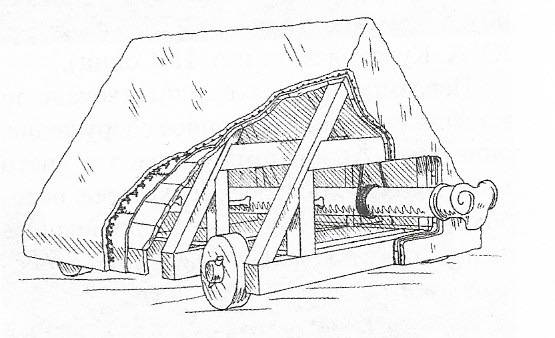
Already at the end of the VI century. There is a message that the Slavs use a "ram" with an "iron forehead." At the same time, we saw that the Slavs at the beginning of the VII century. Together with the Lombards, they used rams (aries) during the capture of Mantua in Italy. We are talking about the Slavs who lived in Panonia, in the immediate vicinity or together with the Avars, and were those tribes who participated in the campaigns of the Avars in the Balkans and to Constantinople at the beginning of the XNUMXth century.
Further, at the beginning of the VII century., CDS reports that the Slavs use precisely complex, rolling "rams", "from huge trunks and well-rotating wheels."
Turtle
The next popular siege weapon mentioned by the Slavs was the “tortoise”. This building, under the cover of which the besiegers destroyed the city wall with the help of tools, among which were an ax, a crowbar, a pickaxe and a shovel - all traditional weapons of military craft.
The Slavs could also destroy the walls without covering the "turtles", under the protection of archers and shields.
The turtle, as Vegetius described it,
The Slavs covered turtles for extra protection
(Aleksandrovich S.S.)
Here is what the “turtles” made by the Slavs were:
We also have information that the Slavs also used other devices. In their arsenal were fiery mixtures for setting fire to the walls and, of course, siege stairs. Among these weapons are mysterious "humpbacks." Either it's just stakes, or pointed sticks that drove into the wall to climb onto it. There is no exact information about them.
Odnodrevki
As part of this article, I would also like to mention the craft used in the siege. Traditionally, the Slavs used odnodrevki, but it can be assumed that at the end of the VII century. Slavic pirates in Greece could walk on captured ships. For the first time, the massive use of storming of odnodrevok was used during the siege of Thessaloniki in the early 20s. and Constantinople in 626, when the Slavs attacked the city from the north side of the Golden Horn. George Pisida writes:
tied, scattered hollowed boats »
A lot of controversy arises around where the Slavs built these boats. It can be assumed that during the siege of Constantinople, construction was carried out on the spot, since in these places there is still enough forest.
In the 70s of the VII century. during the siege of Thessalonica, the tribes of the Slavs settled in Greece and Macedonia used “connected” ships. Moreover, they are used, judging by the text, not only during the assault, but also when patrolling the water area in order to block the city. So, during the assault, the Slavs installed siege weapons on ships:
The Slavs used the same scheme, which was described by the polyorgetics Athenaeus Mechanic (≈ I century AD):
Then he once again points out that during the unrest the boats move in different directions and the structure collapses, however, this happened during the siege of Constantinople, when unrest began in the Golden Horn.
So, we see that the Slavs used all the available equipment known in the sieges.
It is important to note that when we talk about siege technology, there is a lot of confusion when exploring it. This is due to the fact that it has not changed for a long time: from antiquity to (very approximately) the beginning of the Crusades. It is significant that around the dates of life of the most famous polyorgetics in the scientific literature there is a dispute in the ranges calculated over the centuries (A.V. Mishulin).
Slavic fortifications of the VI — VIII centuries.
At the end of the VI century. in different Slavic lands, fortifications begin to appear en masse. Of course, archeology does not provide us with information about the social needs for the creation of such fortifications, which causes controversy in the scientific community. A straightforward approach, when the fortification is viewed exclusively as a place of protection of the surrounding population from raids, is not always appropriate: in addition to external threats, it is necessary to take into account the specifics of the state of the studied society, and this is often completely impossible due to the state historical sources.
If for a long time the early Slavs were dominated by an open type of settlement with rare fortifications, then from the end of the VI century. many fortified places arise.
This, it seems to us, was connected with two points: the first was the formation of tribal unions, where the central settlement required protection primarily as a cult center and as a center of power and control.
The second - during the migration movement, especially in the western direction, there was a military need to create “military” outposts. The "military" were not put in quotation marks by chance, since these are primarily fortified tribal centers in a foreign environment, as is the case with the advance of the Western Slavs to the west of Europe or the northwest and northeast of Eastern Europe in the case of the resettlement of the eastern Slavs.
Ukrainian archaeologist B.A. Tymoshchuk developed a periodization of these fortified settlements, identifying three types: a refuge, an administrative center, and a sanctuary.
Community centers had wooden walls reinforced with clay slopes on the outside.
The most famous of these community centers-settlements is Zimno (a settlement on the Luga River, a tributary of Western Buka, Volyn, Ukraine).
The author of the excavations of Zimnovsky settlement VV Aulikh attributed its beginning to the end of the VI century, but later, when using clarifying data, the occurrence of Zimno was attributed to a date no earlier than the beginning of the VII century.
Timoshchuk B.A. writes about the Zimno fortifications:
There are eighteen such fortified hillforts or tribal centers on the territory of Carpathian Ukraine, lands belonging to the Duleb tribe.
Note that not all the territories of the Slavs of the XNUMXth century investigated with such care, so we can apply the retrospective method here.
Without removing the external threat from the agenda, the emergence of fortified settlements can be explained only by the beginning of the formation of new relations between kindred tribes and the struggle for power in tribal unions.
At the beginning of the VII century. fortifications appeared on the territory of the Sukovsko-Dziedzitsky (Lehitskaya) archaeological culture, an example of which is the strengthening of the Shelig city with an area of 5 hectares on the Slupyanka River, the left tributary of the Vistula. The fortification had a small earthen rampart, with stones and a wooden wall, and was located on the borders of the khanate (Alekseev S.V.).
To the east, on the territory of the Kolochin architectural culture (the forest part of the Dnieper to the Dnieper), there were a number of fortified settlements (VII century): permanent dwellings and shelters ((Kolochin-1, Kiseli, Cherkasovo, Nikodimovo, Vezhki, Bliznaki, Demidovka, Akatovo, Mogilev -Zmeevka) The fortifications were located on the cape, consisted of fortifications with ramparts and ditches (sometimes not one), had several defensive sites. As a reinforcement for the ramparts, wood was used. Defensive walls were also used along the edges and ridges. closed long houses with a courtyard (A. Oblomsky).
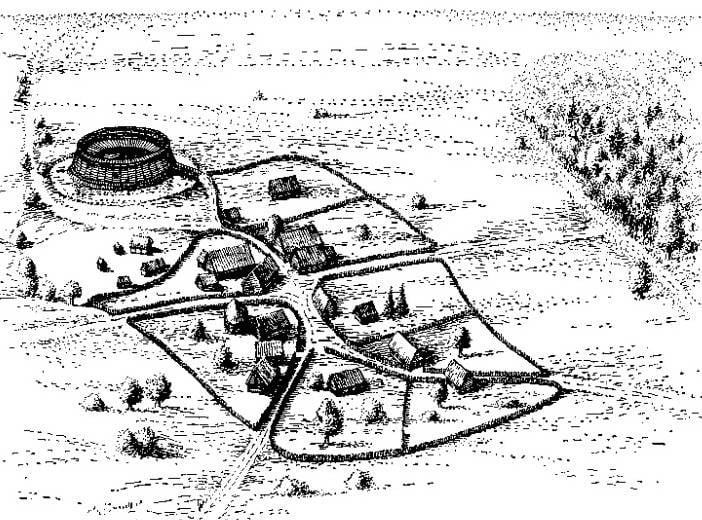
At the beginning of the VII century. Slavs, moving from the east to the Oder basin, in an alien, unknown environment, built their hillforts as powerful defensive structures.
Do not forget that a person of this period real and imaginary external forces seemed equivalent in terms of threats. And protection from them, including with the help of fortification, was the most important thing, especially in the process of migration to a hostile environment. Even considering the fact that, as historians suggest, these areas were quite deserted.
But for the first Slavic settlers, the threat came from the east. So the Tornovo hillfort (Spree river basin) perished, on the site of which new migrants erected new fortifications: a powerful annular shaft 10-14 m high, a ditch 5-8 m wide, structures from vertical pillars and log houses.
Sorbians (Serbs) migrating to this area, Antian tribal group, at the beginning of the XNUMXth century created powerful fortresses between the Elbe and Saale rivers: the structure was a dry masonry fortification with wooden structures on top.
Serbs (sorbians) used the skills borrowed from the Byzantines in the Danube border area during the construction of fortresses.
In the same period, the grad center of the Racing Union was built - Stargrad (now Oldenburg) and Veligrad (Mecklenburg). Features of its strengthening: an area of 2,5 square meters. km, the shaft is 7 m high, the base of the shaft was a wooden skeleton, covered by a "carapace" of blocks and planks. This design will soon become decisive in the construction of fortresses in these territories by the Slavs.
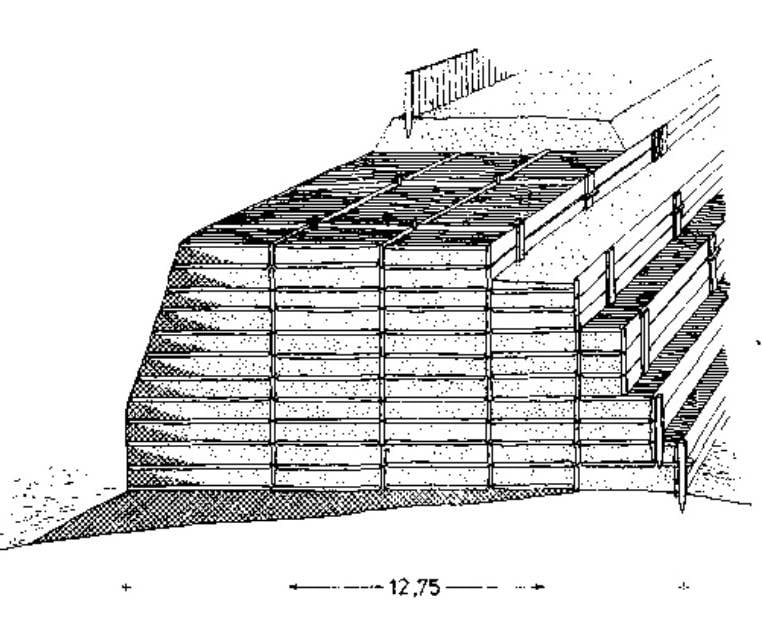
Obviously, the Vogastisburk fortress, in which the first Slavic king Samo was located and which was besieged by the Franks of Dagobert I (603-639), was in approximately the same construction in about 623. For details about this castle, see the article on "VO" "The first state of the Slavs".
It is important that such a powerful building was too tough for the Franks, the attempt to take the “castle” by starvation failed, because, apparently, the Slavs did not just sit in the fortification, but actively counterattack, which caused the besiegers who left the camp to flee.
We see that the fortifications of the early Slavs were distinctive and original, for their construction the Slavs had enough opportunities and forces.
In conclusion, it should be noted that not all Slavic tribes possessed siege skills, just like the level of “fortification” knowledge was different, and this undoubtedly came from a different level of tribal development. Obviously, those who worked more closely with more developed states went further.
But in general, all the Slavs were still at the tribal stage of development, in anticipation of early statehood.
Sources and literature:
Corpus scriptorum historiae Byzantinae. Theophanis chronographia. Ex recensione loan. Classeni VI Bonnae. MDCCCXXXIX.
Anonymous Byzantine. Instructions for polyorhetics. Translation by Starkhov M.N. Greek polyorhetics. Flavius Vegetius Renatus. SPb., 1996.
Greek polyorhetics. Flavius Vegetius Renatus. SPb., 1996.
About the strategy. Byzantine military treatise. Translation and comments Kuchma V.V. SPb., 2007.
Paul the Deacon "History of the Lombards". Translation by D.N. Rakov. M., 1970.
Procopius of Caesarea War with the Goths. Translation by S.P. Kondratiev. T.I. M., 1996.
Mauritius Strategicon. Translation and comments by V.V. Kuchma. SPb., 2003.
Flavius Vegetius Renat Summary of military affairs. Translation and comments by S.P. Kondratiev. SPb., 1996.
Codex of ancient written news about the Slavs. T.II. M., 1995.
Alexandrovich S.S. The siege of the ancient Slavs in the VI-VII centuries. // Russian and Slavic studies: Sat. scientific articles. Vol. 1. The answer. Editor Yanovsky O.A. Minsk, 2004.
Alekseev S.V. The great resettlement of the Slavs 672-679 years. (Unknown Russia) M., 2015.
Aulikh V.V. Zimnivske ancient settlement - words of the memorial of VI-VII centuries not. in the Wolin. Kiev, 1972.
Bannikov A.V. The Roman army in the IV century (from Constantine to Theodosius). SPb., 2011.
Mishulin A.V. Greek polyorhetics about the art of siege of cities. // Greek polyorhetics. Flavius Vegetius Renatus. SPb., 1996.
Nicholl D. Haldon J. Turnbull S. The Fall of Constantinople. M., 2008.
Oblomsky A.M. Kolochinskaya Culture // Early Slavic World. Archeology of the Slavs and their neighbors. Issue 17.M., 2016.
Sedov V.V. Slavs. Old Russian nationality. M., 2005.
Timoshchuk B.A. East Slavic community of the 1990th-XNUMXth centuries AD M., XNUMX.
Kuchma V.V. Military organization of the Byzantine Empire. SPb., 2001.
To be continued ...
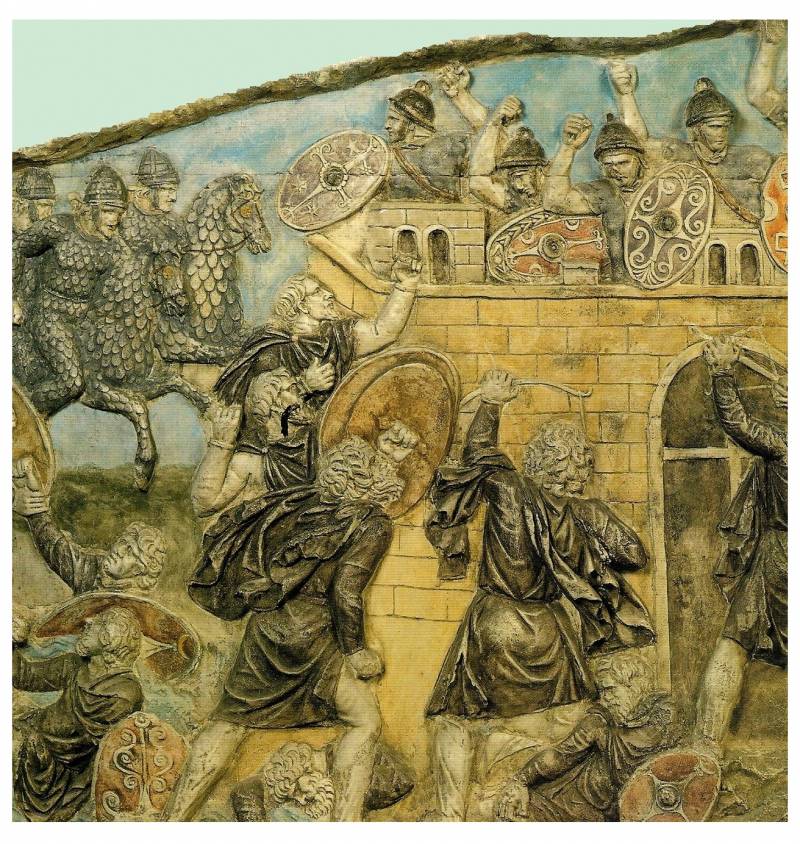
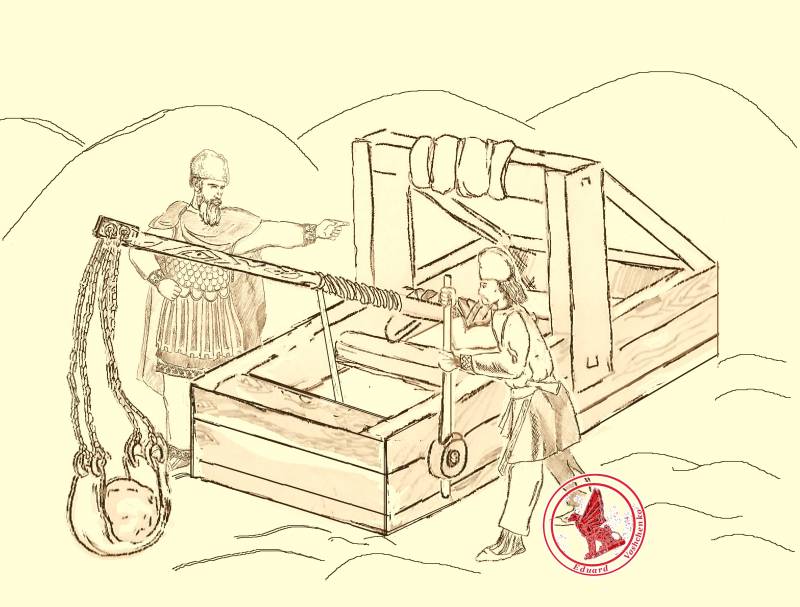
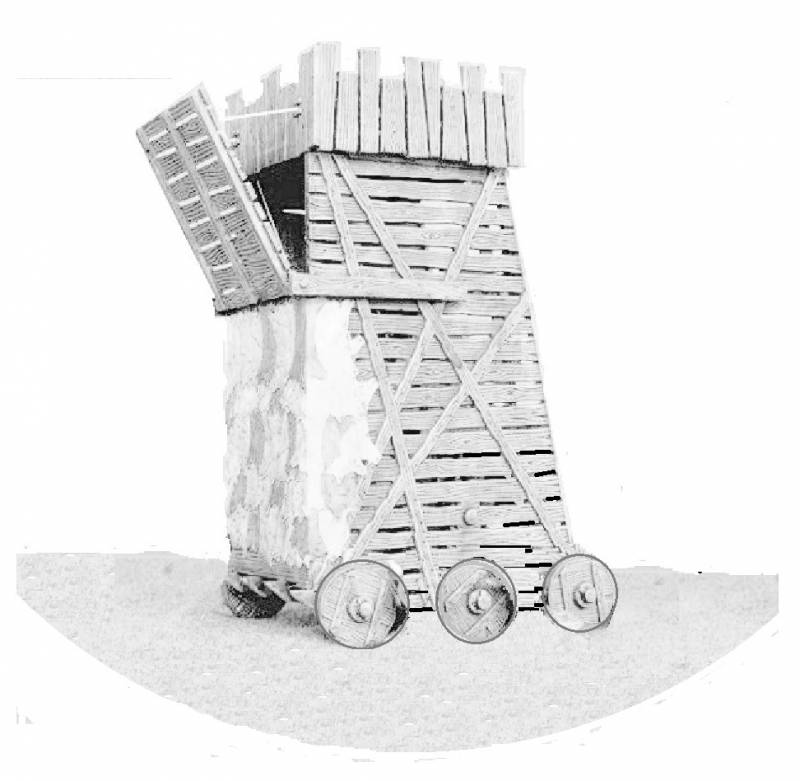
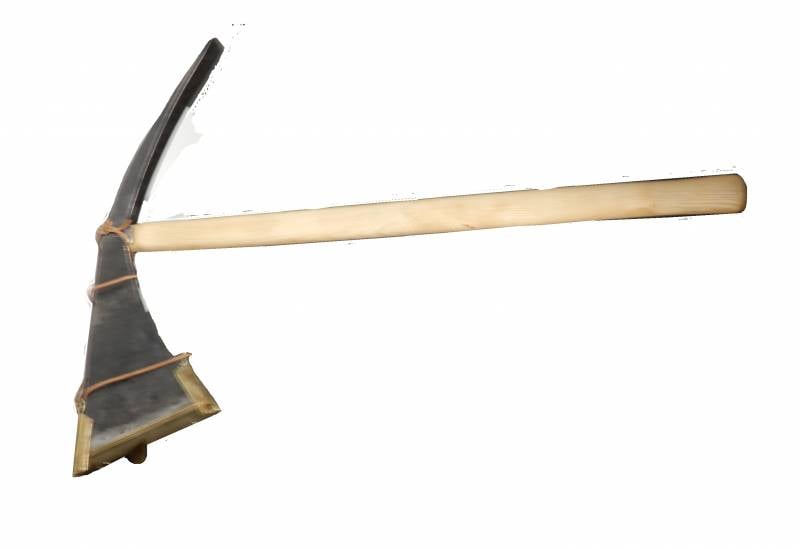
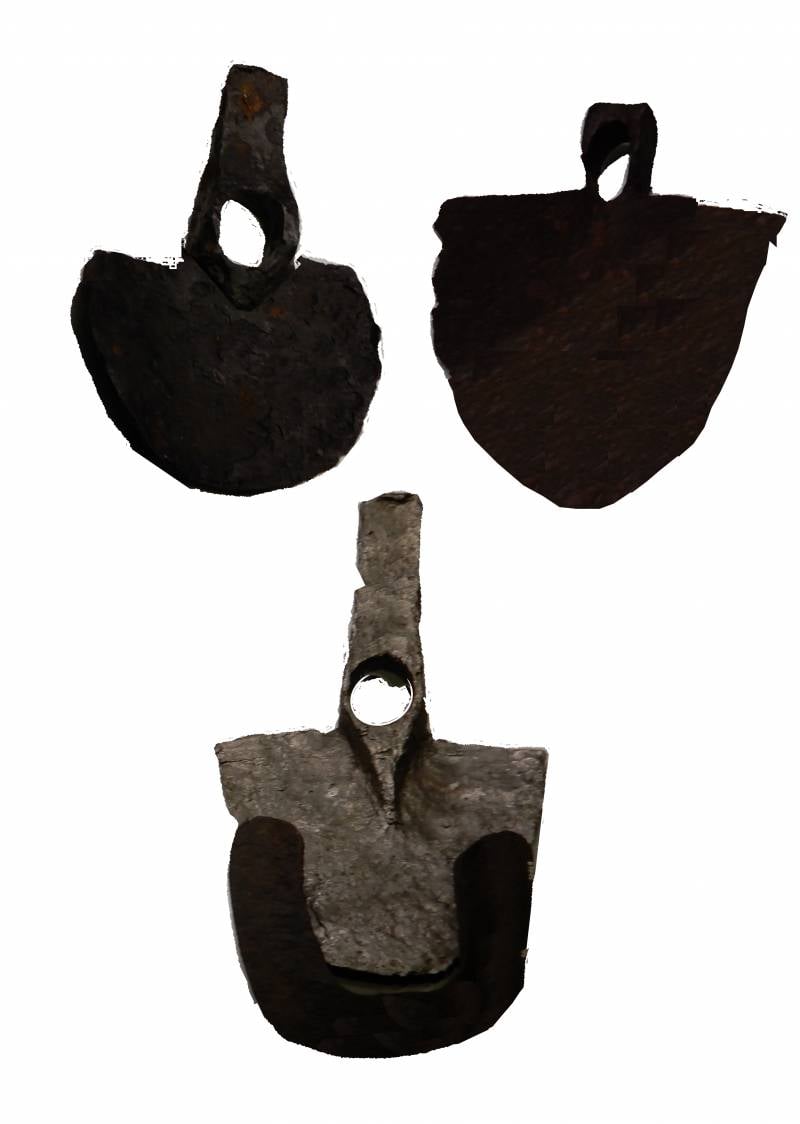
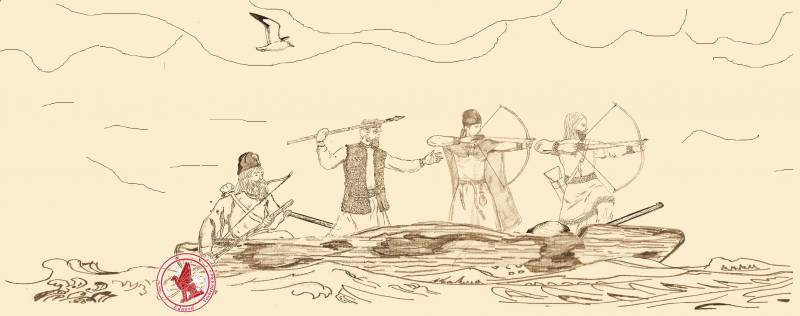
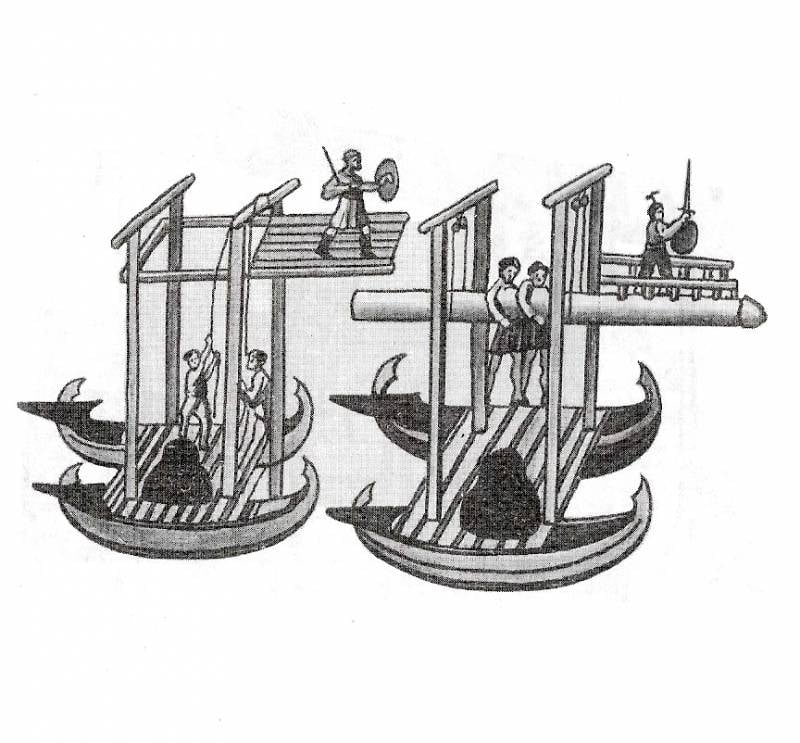
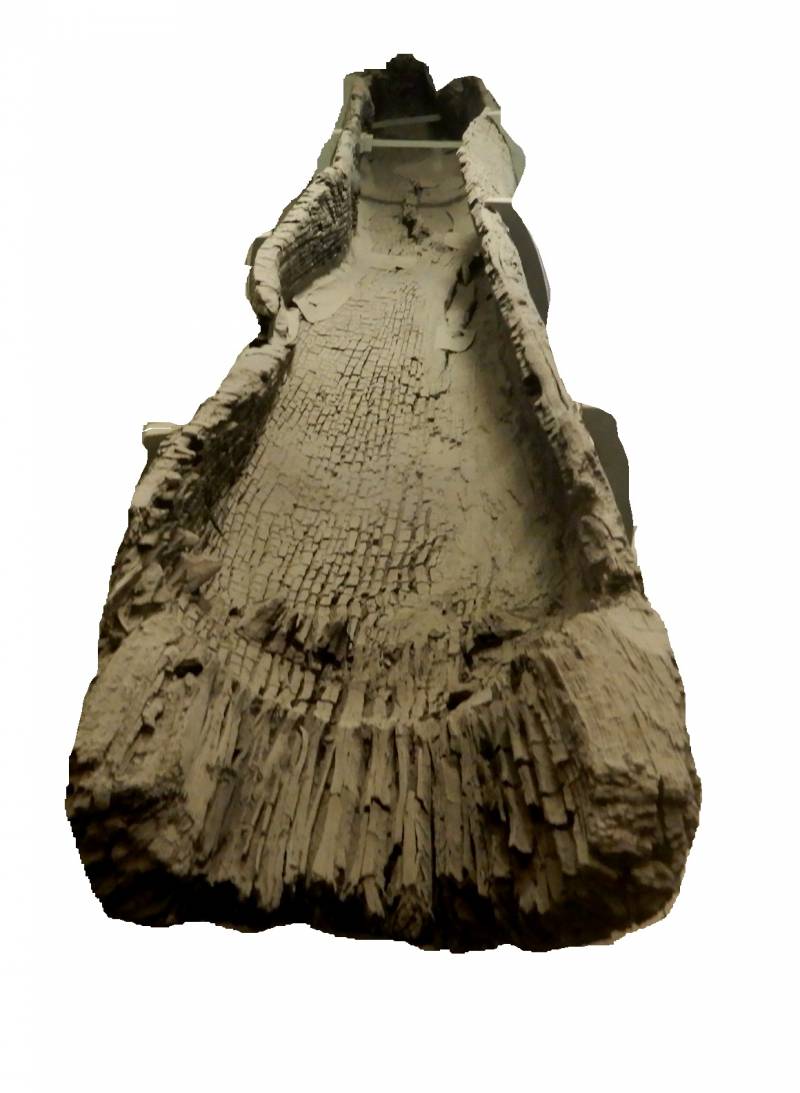
Information